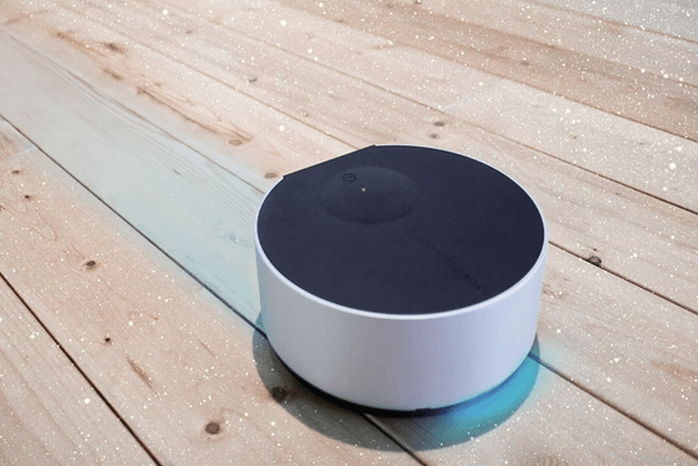
Read the label on any of those surface cleaners you use on your kitchen counter and you’ll notice some pretty serious warnings: “Causes irritation to skin and eyes,” “only use in well-ventilated areas,” “may cause harm to humans and domestic animals,” among others. It kind of makes you think — should we really we using this stuff on the same surfaces we prepare food on?
Enter: UVe. It’s basically like a Roomba for your countertops, but instead of simply sucking up debris, the little bot roves around and blasts low-wavelength ultraviolet light onto any surface it passes over. In doing so, it effectively scrambles the DNA of any germs on your countertops, rendering them incapable of breeding/multiplying.
Skeptical? Don’t be. UVe definitely isn’t the first device to use this sanitization technique. Ultraviolet light is used as a disinfectant in hospitals, laboratories, swimming pools, and drinking water treatment facilities around the world, because it offers safe, industrial-grade disinfection without the complications and side-effects of chemical treatments.
To use the bot, you simply drop it on your countertop and hit the “go” button. From there, the bot will spring to life and begin crawling around your countertops autonomously, using UV light to kill germs, and edge detection algorithms to keep itself from falling. It also has memory, so as it explores its surroundings, it can remember where it’s been already, as well as all the obstacles it encountered along the way.
As UVe learns the terrain, it calculates new, more efficient routes to cover the maximum area as many times as possible before the end of its cleaning cycle. And of course, when the battery starts to get low, it just drives back to the charging port and juices itself back up.
The robot isn’t quite ready for primetime just yet, but its creators at Seattle-based design firm THAT! have recently launched a Kickstarter campaign to raise money for production. You can lock down a UVe of your own for a pledge of about 89 bucks, and if all goes according to plan, THAT! expects to begin shipping the bot sometime in November.
Editors' Recommendations
- How is an A.I. vacuum different than a robot vacuum?
- Robot vacuum scorecard: Which is the most efficient cleaner?




